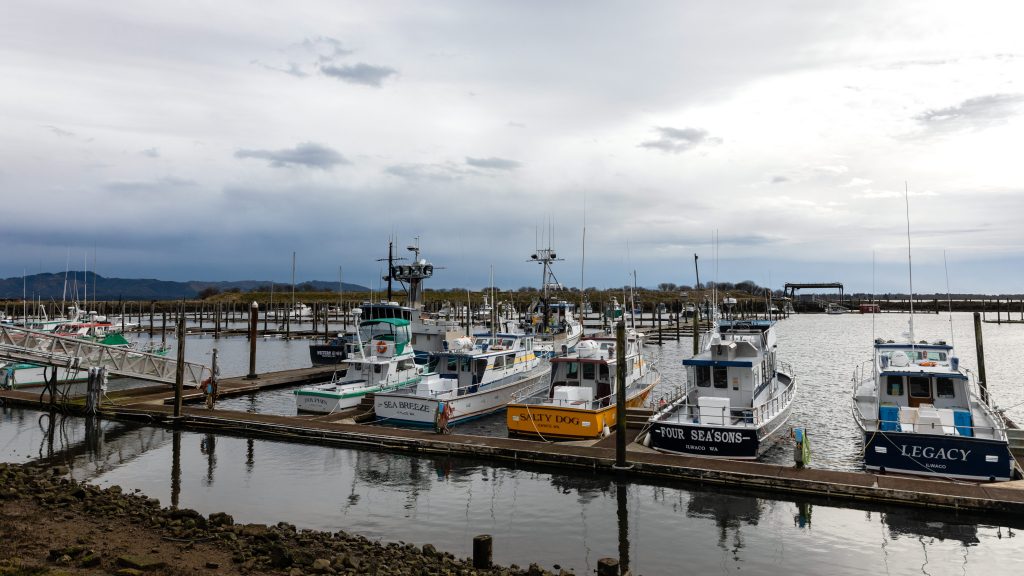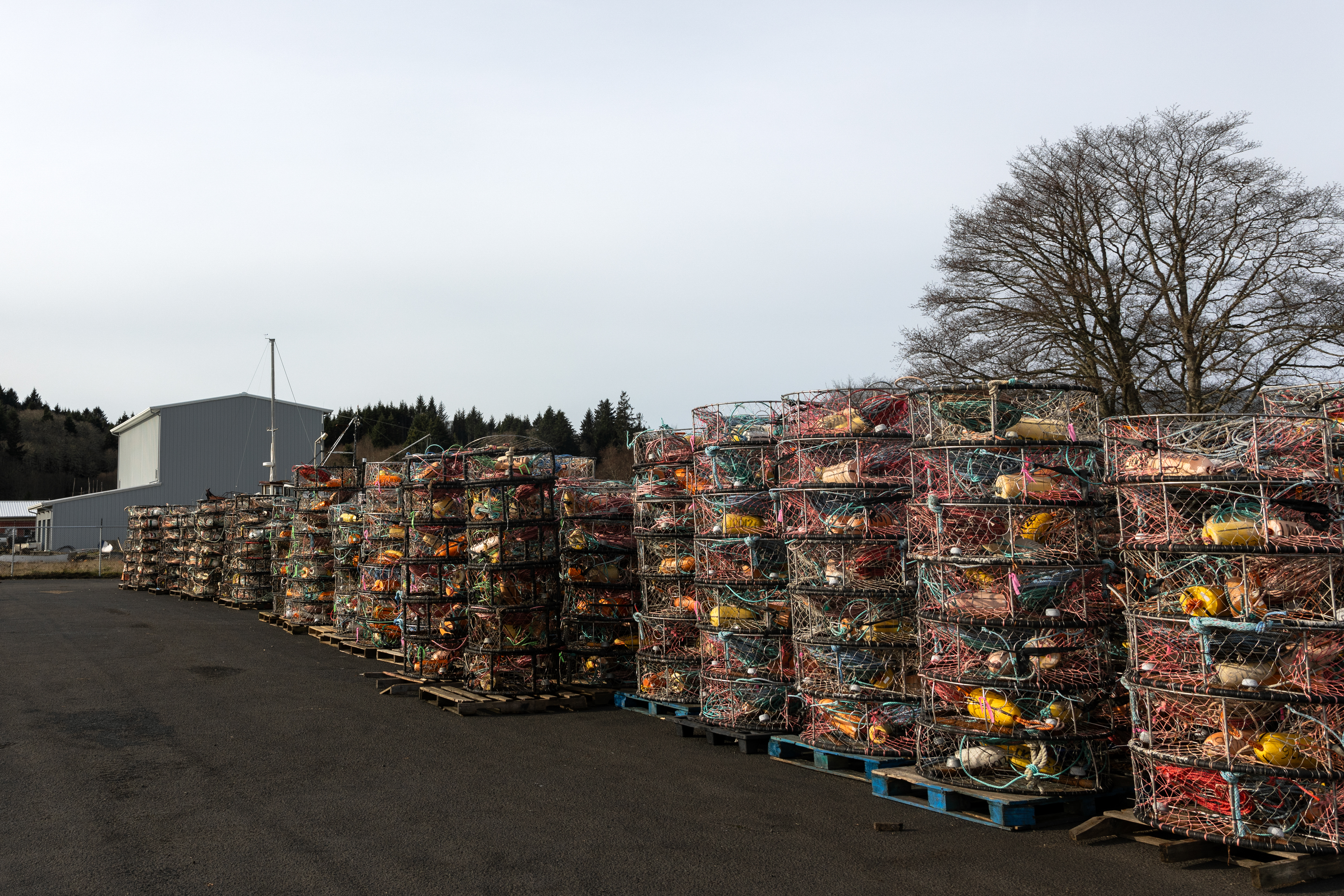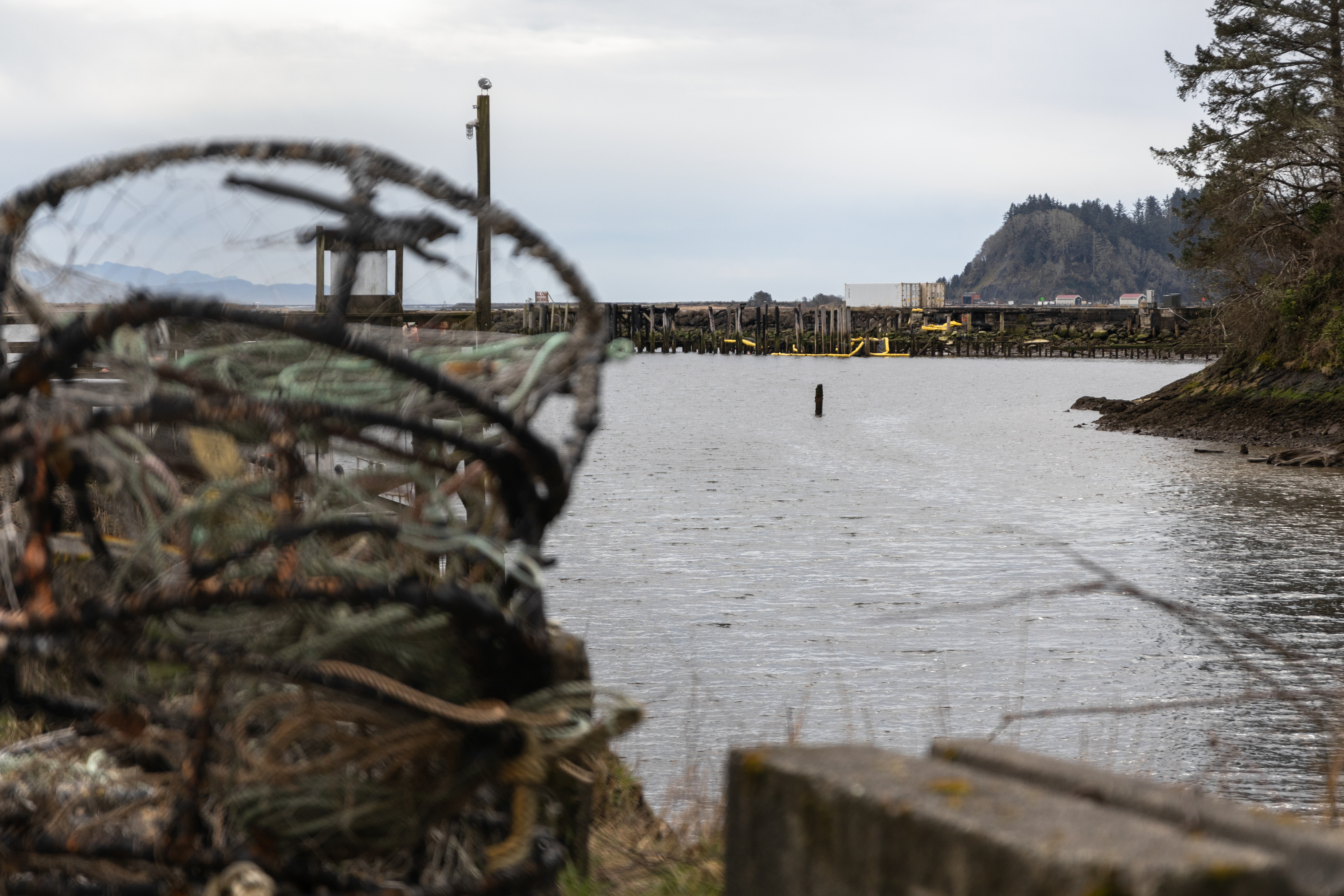‘That’s a healthy community’
Published 11:00 am Saturday, April 12, 2025

- Boats line the docks at the Port of Ilwaco in February. (Lukas Prinos/The Astorian)
The way the winds were blowing that day, Butch Smith didn’t even know about the fire at first, even though it was — almost literally — right outside his front door.
The small Port of Ilwaco perches near the mouth of the Columbia River in Pacific County, Washington. Smith, the owner of Coho Charters and a commissioner for the port, lives at the east end. Ilwaco Landing, owned by Bornstein Seafoods, was to the west.
On Jan. 22, 2024, a massive fire broke out at the facility, sending up plumes of dark smoke. The smoke was so bad it triggered a warning from county emergency management officials to Ilwaco residents to shelter inside and keep doors and windows shut.
Ilwaco Landing was piled high with crab pots, standing in preparation for the opening of one of Washington state’s most significant fisheries: commercial Dungeness crab. That day, these orderly lines of gear hampered efforts to control the fire. Along with the dock and facility buildings, materials used in the pots fed the flames.
Up in smoke
By the time the fire was under control, thousands of crab pots, representing hours of work and potentially worth more than $1 million, were lost. No injuries were reported, but the fallout for the fishermen looked potentially catastrophic.
“It is basically — yeah, it’s 20 years of my life that just went up in smoke,” Peter Nornes, a lifelong fisherman who had gear stored at Ilwaco Landing, said at the time. He lost 500 pots in the fire.
“My initial thoughts were, ‘This is gonna be bad,’” Smith said, adding, “I knew how much fear was there and how much people were going to lose so close to the opening.”

Crab pots are stacked before being loaded onto boats at the start of the season. (Lukas Prinos/The Astorian)
Just under 10 commercial fishermen had gear stored at the site. Several boats had lost everything they would need to be on the water when the season opened. The bulk of the crab caught in the West Coast’s commercial Dungeness crab fisheries is caught quickly, often in the early weeks of a season.
There was no good time to lose so much gear, but right before a season opener was possibly the worst time.
The Ilwaco Landing fire destroyed around 4,000 pots. But, in a response that continues to astound people with decades of experience in local commercial fisheries, within four days, almost as many crab pots were back in fishermen’s hands.
“I’ve never seen anything like it,” said Dale Beasley, president of the Columbia River Crab Fisherman’s Association.
Comradeship
To him, he said, “It tells you something about the comradeship of the crab fleet. Even though they’re highly competitive with one another, they’re also very compassionate. That just doesn’t happen. I’ve fished in a lot of fisheries where you didn’t tell anyone anything.”
Gear donations came from all over: as far south as California, all up and down the West Coast. Local crabbers loaned out the gear they could spare. One Native fisherman showed up with a truck full of thousands of dollars worth of crab pots and gave them away. Nobody caught his name.
Commercial fisherman Jay Vaughn had never seen anything like it either. When U.S. Rep. Marie Glusenkamp Perez, who represents southwest Washington, visited Ilwaco after the fire, he told her it was a collective effort and one he was happy to be a part of.
“I’m kind of coming up in this, too,” Vaughn said. “I’ve had a lot of help getting here.”

Damaged supplies sit across from Ilwaco Landing, where a Bornstein Seafoods crab-landing facility
burned in 2024. (Lukas Prinos/The Astorian)
People showed up to offer meals and help collect pots as the impacted fishermen scrambled to prepare — again — for the season. A new nonprofit even emerged from the fire: FishHer Columbia Pacific CommUNITY Alliance, an organization of women ready to respond to future emergencies.
With the gear in hand, another key component was the fact that the Washington Department of Fish and Wildlife waived certain requirements for how the gear was tagged. It was an unprecedented effort to make sure fishermen impacted by the fire would be able to get out on the water when the season opened. Oregon also reissued the necessary tags for the season at no extra cost.
“The fact that Washington stepped up immediately without prompting was fabulous,” Beasley said. “Our crab manager understood the gravity of the situation.”
If they hadn’t suspended the gear marking, Beasley said those crab fishermen would not have been able to go fishing that year.
A new season
This season, a number of the fishermen impacted by the fire are back on the water, including Nornes. By early February 2025, initial Dungeness crab landings in Washington’s coastal commercial fishery were at more than 3 million pounds, for an ex-vessel value of more than $20 million — relatively low volume, but a good price.
Fishermen saw opening prices of $5.75 per pound, a record and well up from the $3.50 per pound they saw last season.
For the fishermen, the uncertainty of the current season is the sort of familiar uncertainty they encounter with nearly every season, requiring the nimbleness and capacity for risk that are part of the job.
The future of the Ilwaco Landing facility is on less settled ground.
Andrew Bornstein of Bornstein Seafoods declined to answer questions for this story. Smith, however, said there could be challenges when it comes to rebuilding at the overwater Ilwaco Landing site.

The fire destroyed about 4,000 crab pots, but within days, as many were in fishermen’s hands. (Lukas Prinos/The Astorian)
Insurance will only cover so much and likely not the cost of new pilings. There are state regulations that complicate any plans to phase the pulling of old pilings and driving of new pilings, Smith said.
If the site were on port property, there would be more resources available when it comes to low-interest loans or grants. But Ilwaco Landing is on private property. It is, in fact, the only privately held piece of property at the Port of Ilwaco. Smith has been working with Washington lawmakers, but he said the situation is in a bit of a holding pattern.
For the port, there is some urgency in getting the facility back up and running. Bornsteins primarily used Ilwaco Landing as a place to land crab. That tonnage counted to the overall tonnage crossing into the Port of Ilwaco and has helped the port qualify for crucial federal dredging on the channel that leads out to the Columbia River.
The facility also provided important cranes for the Bornstein boats that landed there. Those same boats might be able to use cranes at the nearby Safe Coast Seafoods processing plant near the Port of Ilwaco marina to load crab pots, nets and other gear. But it’s not guaranteed.
This realization has prompted the port to start looking for money for a fisherman’s dock, a working dock with a crane or two that any commercial fisherman could use regardless of who they sell to.
For now, Smith said, the port is continuing to see how it can support Bornsteins.
“All our industries are important to us,” Smith said. “A healthy port with a healthy fishing community — that’s a healthy community.”





